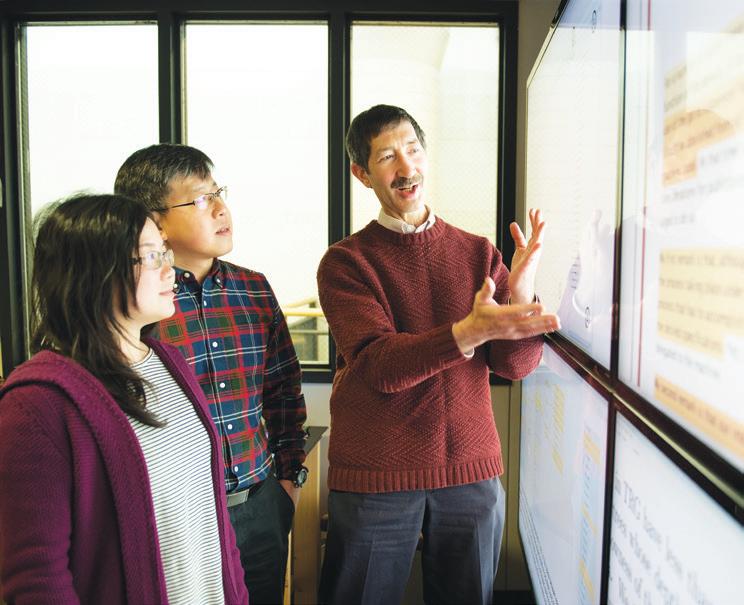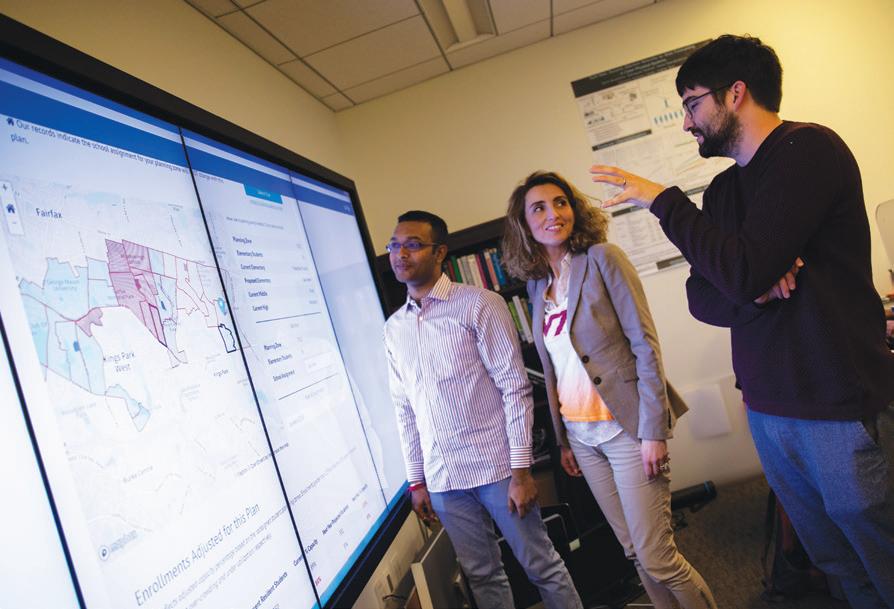
4 minute read
Virginia Tech AI/ML
Naran Ramakrishnan with students
All photos: VT
Advertisement
Taming “big data” for AI and ML at VT
By Gene Marrano
Big data, AI, ML, algorithms; get to know the lingo of a brave new world that’s already here.
Artificial Intelligence (AI) and Machine Learning (ML) that is the result of algorithms turning data into commands and tasks will become more of a factor in the manufacturing world – and in many other business sectors – in the future. The Sanghani Center for Artificial Intelligence and Data Analytics at Virginia Tech leads the efforts at VT when it comes to “big data” research. The Sanghani Center is headquartered in the Washington DC metro area but also has faculty and students in Blacksburg as part of the Department of Computer Science in Virginia Tech’s College of Engineering.
Naran Ramakrishnan is director of The Sanghani Center for Artificial Intelligence and Data Analytics; he was in Blacksburg for 13 years before heading to NOVA. The center was renamed for a benefactor a few years ago says Ramakrishnan. That big data may come from sensors in a manufacturing environment, from social media, images, text – analyzed by computer scientists and mathematicians, turning raw information into useful tools by the way of programmed algorithms. “The more data you obtain you see much faster progress being made,” says Ramakrishnan. Good, labeled data “that’s been classified by humans,” is a key, helping identify problems more quickly, in the manufacturing sector for example. “That’s always a premium.”
will further help identify patterns that AI can use to in turn instruct machine learning. “You try to find structure in the data.” In a manufacturing plant where a sensor might shut down a line if it detects a flaw or something out of tolerance, structured data can be used for root cause diagnostics. “It could have happened several steps upstream. It’s a really small problem [then] but it increases in intensity by the time you observe it ... further downstream.” Using data analytics to find the problem origin earlier is a key.
Right now, AI and ML is most widely used in plants where robotics are employed to automate specific tasks says Ramakrishnan, such as for fault diagnostics and predictive maintenance. “Some sectors are further ahead than others,” he notes. The Sanghani Center has collaborated in the past with General Motors on fault diagnostics. Algorithms extrapolated from data is designed to pass along vital information from one operator to another as a training tool. VT has also partnered with Rolls-Royce at its University Technology Center, “working to enhance product understanding, control, and life-cycle management through innovation in measurement system technology and to provide effective transition of data to knowledge,” according to VT.
Ramakrishnan says the recently released chatbot ChatGPT will answer just about any question you have in a more natural language: “its pretty remarkable,” although he notes it still makes the occasional mistake. “These algorithms mine every piece of knowledge that is out there – every website, Wikipedia, news, social media. They’re able to solve real problems.” That could make ChatGPT a valuable training tool for businesses, if employees are able to get the answers they need on a timely basis.
So, will AI and MI replace human beings on a larger scale, on the manufacturing floor, at call centers, or elsewhere? “I don’t think that’s the right question to ask. Humans that work with this type of technology will be more competent than those who cannot. Think of it as something that’s augmenting your intelligence—something that might have taken you five hours to do may now take you one or two hours.” That’s a huge productivity gain of course. Algorithms that collect and disseminate big data are also learning in some cases to configure machine learning routines themselves (AutoML), lessening the need for expensive programmers to perform those tasks.
Tech students in the DC area and in Blacksburg are studying all aspects of data and AI; there are data analytics programs at both the undergraduate and graduate levels. Even in fields of study like mechanical engineering and chemical engineering, Ramakrishnan says there is a focus on AI and ML. “You learn about machine learning in the context of [chemical] reactions,” for example he notes.
“The best technologies are those that disappear,” says Ramakrishnan, quoting a famous computer scientist, “they become so prevalent and ubiquitous that you really don’t think about them. They’re everywhere.” With all of that data being collected from a myriad of sources people – and businesses – will realize they need to mine it with the help of algorithms, to look for patterns or trends that can lead to process improvements. The era of Big Data/AI/ML may have just scratched the surface at this point.












